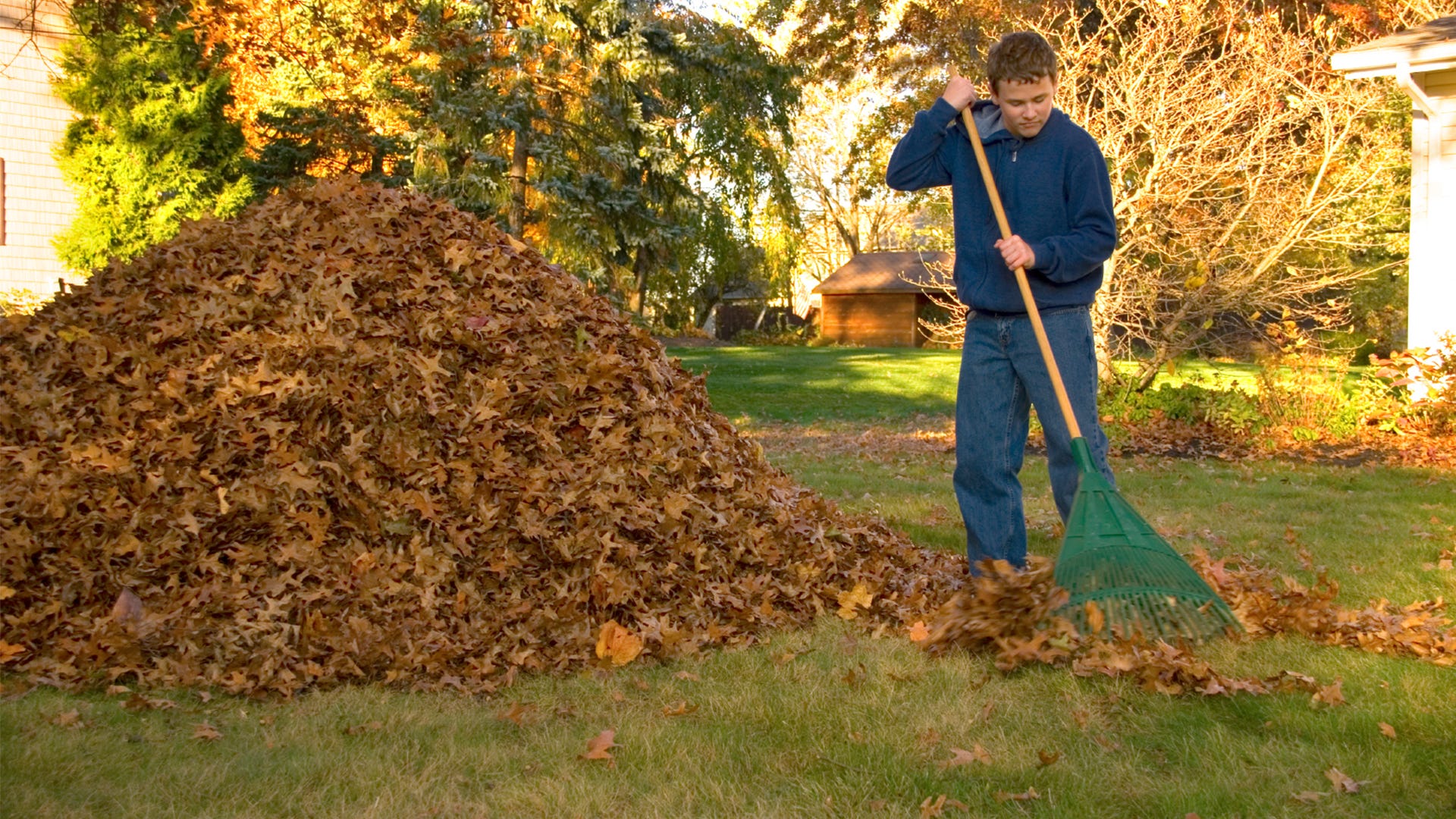How do you put your garden to bed for winter? See our 10 tips on how to winterize your garden beds—from covering garden soil to protecting trees and shrubs.
1. Clean Up Your Garden Beds
If you are like many other home gardeners, you’ve slacked off a bit on gardening tasks as the season winds down—taking less time for weeding and watering and more time for harvesting, cooking, and preserving. (We get it! We do the same thing.) But when your garden’s output slows for the season, it is time to get back to tending to weeds, composting dead plants, pulling up stakes and string, and gathering other clutter that can accumulate over time in a productive garden plot.
As your plants bolt and wither, pull them out and carry them to compost or gather them in to dry or collect seeds. (If you experienced any blight or mildew problems with a plant during the growing season, do not dispose of them in your compost—those stalks or vines should be burned or thrown out to avoid spreading blight the following spring.) Gather and compost any fallen, rotting fruit or vegetables. Pull up the weeds that may have taken advantage of your harvest-season distraction and pull out any stakes, cages, or string that may have supported your peas, beans, tomatoes, and vines.
2. Clean out your compost pile.
Now is the time to scoop out the last of this season’s “black gold” and work it into your recently cleaned up but tired and spent soil. As you recharge your garden beds with compost you also clear new room in your compost bins and piles for the organic material created by your clean-up. (If your existing compost isn’t quite ready yet, you can simply start new piles.)

3. Gather leaves.
Once leaves begin to fall, we have to work pretty hard to stay on top of the season’s signature chore—raking and composting many, many dead leaves. Dead leaves may have gone brown but they are pure “garden gold”—a plentiful, natural ingredient for compost and garden bed covers. Most leaves will rot down into compost in less than two years but if you want to speed up the process, shred the leaves before adding them to your compost pile.
4. Test and feed your soil.
Your gardening soil needs nourishment as much as the plant life it supports and autumn is the ideal time to sample your soil and see what it lacks. Fortifying or remedying your soil after a long growing season balances and strengthens it for the spring planting ahead and many common soil improvements, like lime, need time over the winter to properly break down and be absorbed.
Testing will tell you if your soil is acid, alkaline, or neutral, and that will tell you if you need to add fertilizers.
5. Cover any unused beds.
Remember those leaves we reminded you to pick up? A thin layer of shredded dead leaves makes a wonderful, nutritious mulch for winterized garden beds! Organic covers and mulches do have an insulating effect, however, so keep any layers to less than two inches—a hard freeze helps your soil by naturally killing off common garden pests and diseases and you don’t want to warm your dirt too much.
6. Preserve perennials and cover fall crops.
Depending on your microclimate, perennials that flourished in the spring and summer may not be able to overwinter in the ground without freezing or rotting and even hardy perennials may need a little bit of help. Any perennials you have planted in containers will need special consideration as well. After a couple of killing frosts, dig up and divide any delicate plants that can’t get through winter in the dirt. Container plants can be taken into root cellars, or unheated garages—or even buried in the ground or compost piles. If you have shrubbery in the path of falling ice or snow, build supports or covers to protect them.
7. Plant seeds and bulbs for spring.
Think back to early spring. Did your grounds take too long to brighten up? Were there any bare spots in your lawn and garden? Now is the time to think ahead and plant fall bulbs.

8. Clean, oil, and polish tools
If you are like us, the autumn garden clean-up always yields a few surprises—and one of them is usually a garden tool you thought you had lost. Gather up all your garden tools and give them a thorough cleaning, oiling, and/or polishing before storing them someplace safe for the winter. Broken garden tools can be dangerous! Make sure you mend or replace any tools that took a beating during the season.
9. Make repairs and improvements
Rotting wood in raised beds? Trellises coming away from a wall? The slower pace of fall makes it the perfect time to cross nagging repair and maintenance tasks from your to-do list. It is also the perfect time to clear or build new beds, create cold frames, or any other changes you wished for over the summer.
10. Take notes on the previous year—and set goals for next year’s garden.
Take a moment to write down the highs and lows of this year’s growing season. What seeds did well, and which seeds disappointed you? If you plan on rotating crops, where should next year’s plantings go? Did you wish you had planted more of one thing and less of another? Are there any new tricks or techniques you would like to try? These notes can be invaluable when you begin purchasing seeds and other supplies for next year’s garden.
Whew! You did it—and you can get back to enjoying all the fun the fall season has to offer. We hope these tips will help your garden survive winter and thrive in spring! Please share your own advice or ask any questions below!






2 Comments
[…] Starting your garden can be a really difficult thing, especially if you don’t know what vegetable or fruit grow and blossom in what season. However, the vegetables on this list can be grown year-round, and you can also harvest and enjoy them throughout the year. Planting your own vegetable is also good for the environment, but you also get to know where they are from and how they are growing and save you a lot of money. This list will introduce you to some of the vegetables that you can grow in your own back or communal garden. […]
[…] will have twelve months of gardening ahead, and you will want to use it well. As January is mostly winter, it is a calm season for gardeners. All you will have to do in January is make sure everything is […]